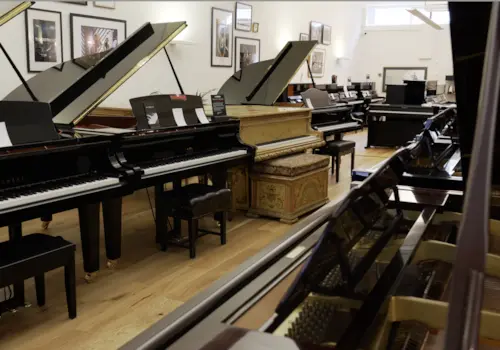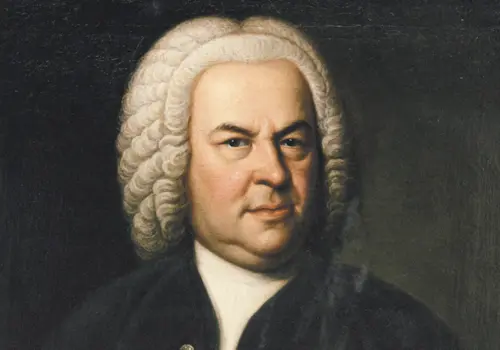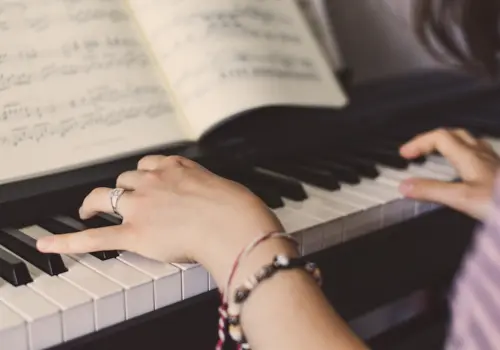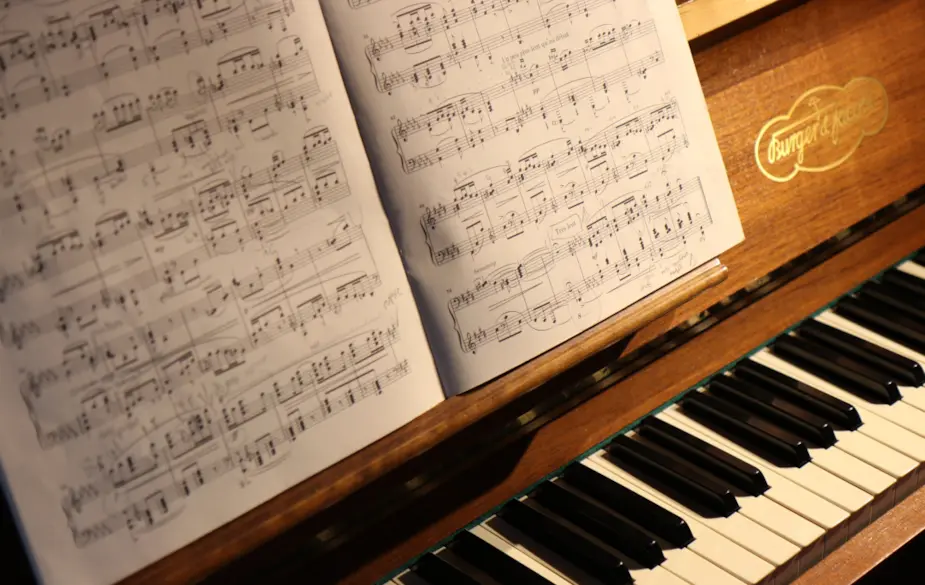Everything you need to know to create a neat and tidy piece of sheet music
If you are currently composing or arranging a piece of music (maybe even for the Pianist Composing Competition), you will know that tidying up your score before completion is a challenge! Our quest for perfection can drive us to tweak, change and edit more than we need to, with no real system in place.
The checklist below is going to be invaluable for when you are approaching the finishing stages of your compositional process. Work your way through each point at your own pace, and you’ll finish up with a beautifully neat and tidy score.
1. First things first….
The title and composer! The title of your piece will always sit centrally at the top of the page. The name of the composer (most likely you) sits on the right-hand side, below the title. You’ll see in the example below that you also have the option to credit others who may have been involved in your compositional process.
Example:

2. Check your clefs
Is there a change of clefs halfway through your piece? Did you remember to insert the new clef? Did you remember to revert back to the original clef if you intended to do so?


3. Time signature
Scan through your piece carefully and make sure that the beats in each bar add up in correspondence with the time signature. We can sometimes add an extra beat in by accident. It’s easily done.
4. Spacing
It's important to make sure that your score can breathe. Make sure you can clearly read every single note, without trouble. Are your left-handed notes edging close to the right-hand stave? Add a little room by moving the two staves a little further apart.
5. Bar lines and bar numbers
Double-check your score for the following, making sure you have not missed any bar lines that should be there.

6. Expressions
Your use of expression throughout your piece can be the difference between a good composition and a brilliant one. Even the smallest of expressions can add so much to a piece of music. Whether you are the intended player of the piece, or whether it's intended for someone else, that player needs as much information as possible. So, scan through your piece and make sure you have included every marking you intended to include. Think about the following:
- Dynamics (crescendo, decrescendo, pianissimo, forte)
- Tempo markings (adagio, allegro, rubato)
- Articulation (staccato, accent)
- Ornaments (trill, turn, appoggiatura)
- Note relationships (tie, slur, glissando)
- Pedal marks
Dynamics in piano music are usually placed in between the staves. Tempo markings, articulations, and ornaments normally sit above the stave, whilst pedal marks will sit below. What if the dynamic marking physically gets in the way of the music? Place it above the music to avoid any collisions.
7. Note accuracy
Forgetting to insert a sharp, flat or natural can affect the player’s – and listener’s - interpretation of the piece. Make sure every single note is marked correctly.
8. Fingerings
Inserting a suggested fingering is entirely optional, however it does of course help the player to a large extent. These are most often placed above the stave for right-hand markings, and below the stave for left-hand markings. Think about how you can create the most comfortable and most logical fingering for the player.
Example:

9. Does your piece make sense?
Ask yourself: Could I sight-read this? If you are a beginner and you are writing a beginner’s piece, and you have answered no to the above question, then perhaps your piece is not quite ready. The same applies to intermediate and advanced players.
10. Not sure? Research it
Whilst we can’t include every single aspect of scoring into this checklist, the internet can. There are plenty of resources online and in books that will cover not only every possible question you have, but that will also cover special considerations when writing music in any style.
Main image: © Unsplash







